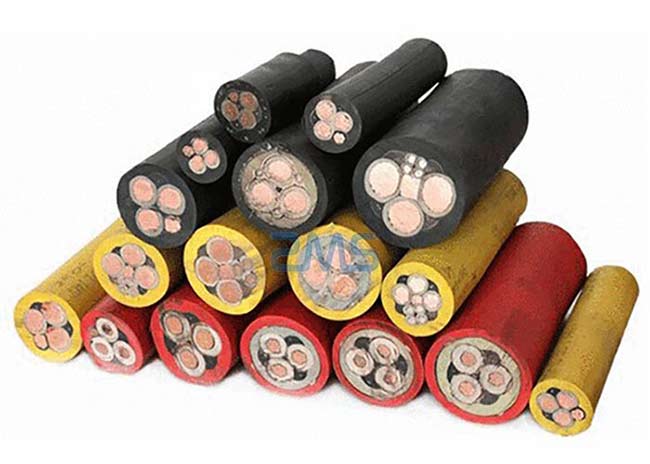ゴムワイヤーとケーブル ゴムとプラスチックの違い


The most essential difference between plastic and rubber is that plastically deforms when plastic undergoes deformation, while rubber is elastic deformation.
ケーブルの材質もケーブルの品質に決定的な役割を果たします. 過去に, プラスチックケーブルがより頻繁に使用されました, しかし徐々に ゴムケーブル プラスチックケーブルの置き換えを開始. やはりゴムケーブルが一番良いのでしょうね. ここで、ZMS ケーブル会社の編集者がゴムとプラスチックの違いを説明しましょう.


大まかに言って, Rubber Is a Kind Of Plastic And Plastic Includes Rubber.
The most essential difference between plastic and rubber is that plastically deforms when plastic undergoes deformation, while rubber is elastic deformation. 言い換えると, it is not easy to restore the original state of plastic after deformation, while rubber is relatively much easier.
The elasticity of plastic is very small, usually less than 100%, while rubber can reach 1000% or more. Most of the molding process of plastics is completed as the molding process of the product is also completed. While the rubber molding process is completed after the need for the vulcanization process.
Plastics and rubber belong to the same polymer materials, mainly composed of two atoms of carbon and hydrogen, and some contain a small amount of oxygen, nitrogen, chlorine, silicon, fluorine, sulfur, and other atoms.
Its properties are special and its uses are special. At room temperature, plastic is solid, 難しい, and cannot be stretched and deformed. While rubber is not hard, or elastic, can be stretched to become longer, stop stretching, and can return to its original state. This is due to the difference in their molecular structure.
Another difference is that plastic can be recycled and reused many times, while rubber can not be recycled directly, but only after processing into recycled rubber, and then available. The form of plastic at over 100 に 200 degrees is similar to the form of rubber at 60 に 100 度. Plastics do not include rubber.
Introduction To Rubber Wire And Cable Chlorosulfonated Polyethylene Rubber Applications
Types
Chlorosulfonated polyethylene is a derivative of polyethylene. depending on chlorine content and polyethylene molecular weight, chlorosulfonated polyethylene rubber has chlorosulfonated polyethylene 20, chlorosulfonated polyethylene 30, chlorosulfonated polyethylene 40, chlorosulfonated polyethylene 45. の 電線およびケーブル産業 generally uses chlorosulfonated polyethylene 20, and chlorosulfonated polyethylene 40.
特徴
1. Have good physical and mechanical properties.
2. Has a good heat resistance and can be used continuously at a temperature of 120 ℃.
3. Excellent ozone resistance, sunlight resistance, and atmospheric aging resistance, outdoor exposure for six years without cracking.
4. Good flame resistance, second only to fluorine rubber and neoprene.
5. Excellent chemical resistance.
6. Good oil resistance.
7. Good resistance to corona and radiation.
8. It has good process performance and can be used with other rubbers.
The disadvantages of chlorosulfonated polyethylene rubber are slightly larger compression deformation and poor low-temperature performance. But because of its advantages, it is a very promising rubber in synthetic rubber.
Chlorosulfonated polyethylene 40 is often used for insulation and sheathing, and chlorosulfonated polyethylene 20 can be used for low-voltage wire insulation.
Rubber Wire And Cable With Silicone Rubber
初めに, silicone rubber is a special rubber, special in its heat resistance is very good.
The heat resistance is because its molecular chain consists of (-Si-O-) bonds, silicon-oxygen bonding energy than carbon bonding much larger 456>348kJ/mol, and Si is a non-combustible element, with the characteristics of inorganic materials, so the heat resistance is high. Silicone rubber has softness, can resist ozone, corona, and flame, has good insulation performance, high and low-temperature resistance (-60-200 ℃), and corona resistance and arc resistance is very good, is the production of wire and cable safe and reliable materials.
第二に, cold resistance, coupled with heat resistance is to say that silicone rubber working temperature range is very wide, the same as above is also the reason is that the bond energy is large.
There are also good oil resistance, solvent resistance, radiation resistance and flame resistance, and good mold resistance; in addition, tasteless and non-toxic, no adverse effects on human health when used.
But he also has disadvantages: 抗張力, tear strength, and abrasion resistance at room temperature is much lower than natural rubber and other synthetic rubber, poor acid and alkali resistance, and expensive, poor processing performance.
Vinyl silicone rubber regardless of processability, physical and mechanical properties, high-temperature resistance, and compression permanent deformation in silicone rubber is relatively good and has more applications in the cable industry.
These are the differences and advantages and disadvantages of rubber cables and plastic cables in various aspects. No matter which cable is used, as long as it is suitable, it must be good to use. ZMS cable has been in the business for more than ten years, bringing better and more professional cables to our customers, with strict manual qualification audit, 信頼できる.
Recent Posts
銅から繊維まで: ケーブルの進化
導入: の "Lifeline of Civilization" Across Time and Space In 1858, after five heartbreaking failures,…
三相ケーブルとは何かをすばやく理解する方法? ここでお気に入り!
In the world of industrial and commercial power distribution, three-phase cables play a critical role…
嵐と洪水! 防水ケーブルが電力を保護する方法?
Introduction In recent years, heavy rainfall and flooding have become increasingly frequent worldwide, causing severe…
循環経済におけるケーブル業界の役割と課題
持続可能性が世界的な優先事項となるように、はじめに, industries across the spectrum are reevaluating their operations…
ケーブル業界はグローバルなサプライチェーンの課題にどう対処できるか?
グローバルサプライチェーンは、メーカーを接続する複雑で必須のネットワークです, ディストリビューター, 小売業者,…
再生可能エネルギーがケーブル需要に与える影響
Introduction The global shift toward renewable energy has become a cornerstone of efforts to combat…

